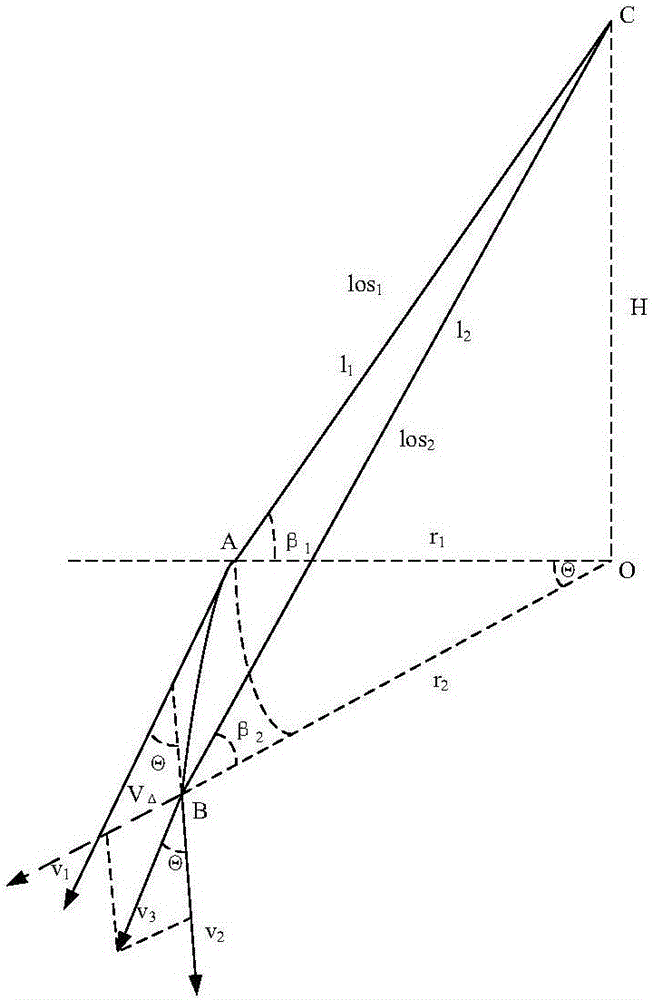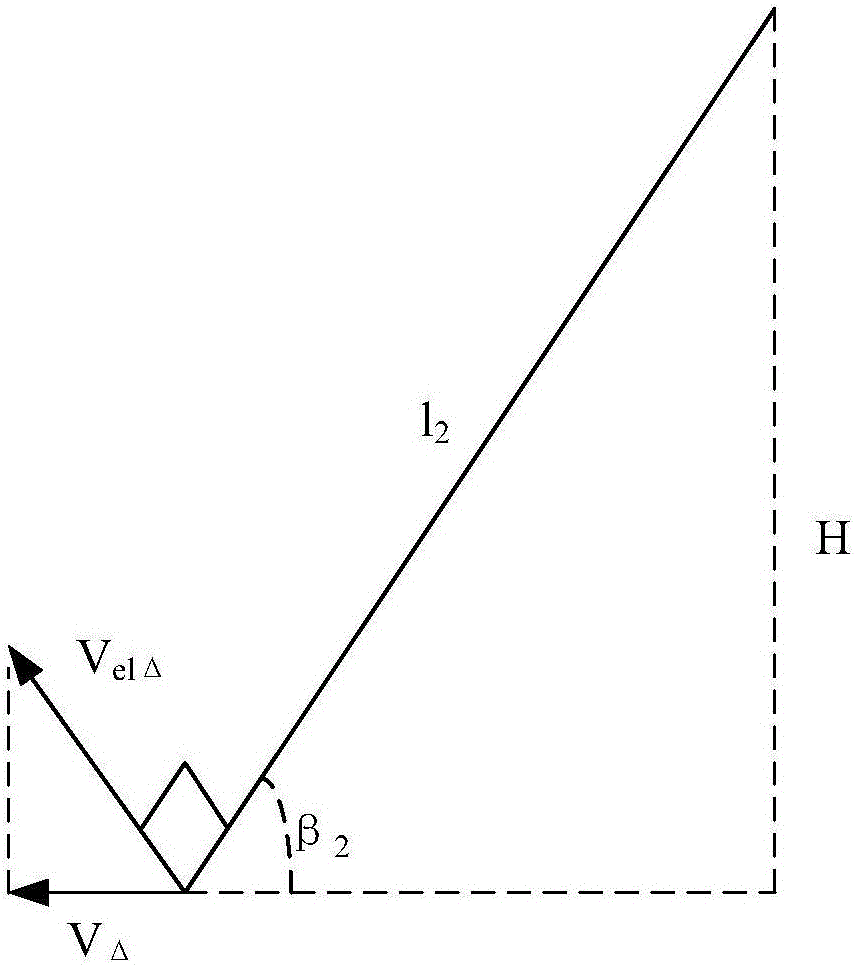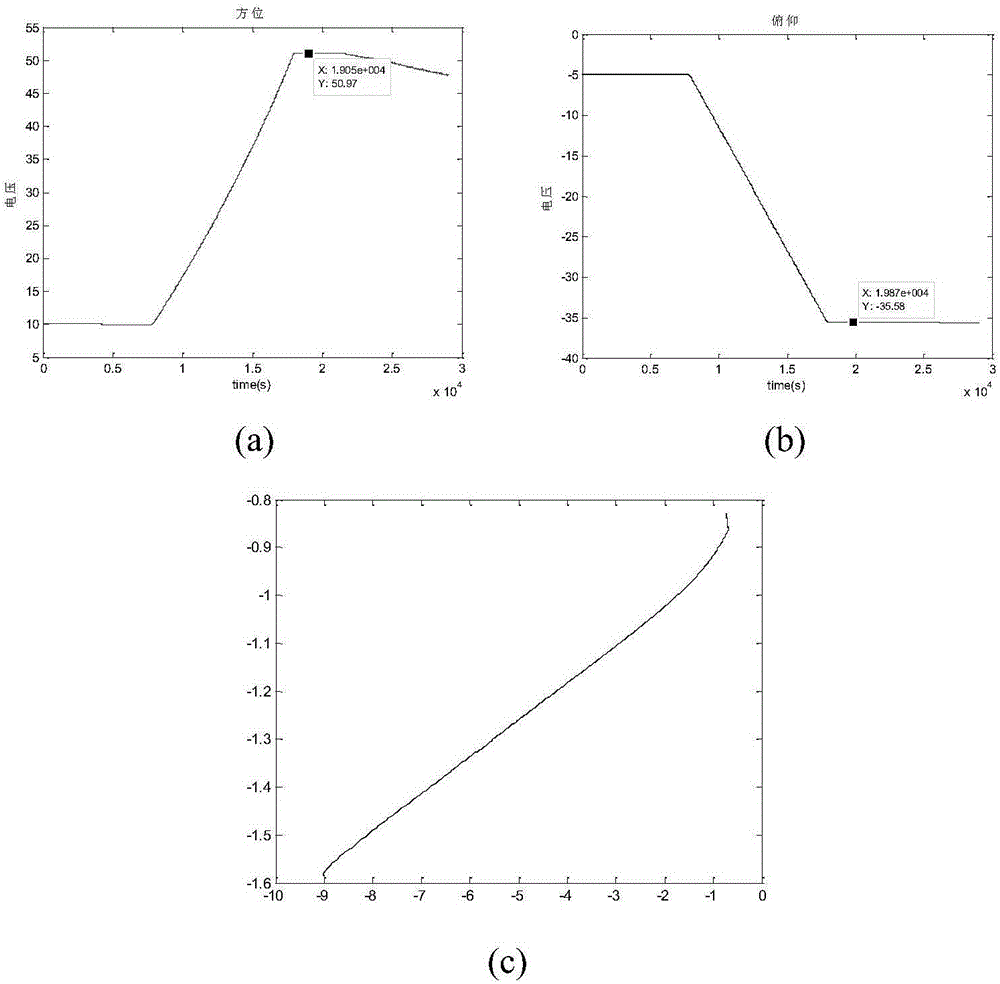Manual mode aiming line trajectory fitting method of photoelectric system for UAV (unmanned aerial vehicle)
A manual mode, photoelectric system technology, applied in directions such as navigation through speed/acceleration measurement, can solve problems such as operator inconvenience, and achieve the effect of reducing difficulty, rich information sources, and user-friendly control
- Summary
- Abstract
- Description
- Claims
- Application Information
AI Technical Summary
Problems solved by technology
Method used
Image
Examples
Embodiment 1
[0042] Embodiment 1: Condition: In a field of view, with a fixed single-lever command value, the line of sight moves half the position of the field of view (target position) from the initial position (the center position of the current field of view). Comparative data:
[0043]
[0044]
[0045] Comparing the two sets of data, after the compensation command is added, the position of the line of sight within the set time is closer to the target position.
Embodiment 2
[0046] Embodiment 2: Analysis of the linearity of the line-of-sight trajectory: comparative analysis is performed through different angle ranges of movement. Condition: Add a fixed single-bar command value, modify the timer to control the movement time.
[0047] image 3 and Figure 4 Include the azimuth and pitch angle records of the movement, and the trajectory of the turret aiming line projected on the horizontal plane. Take the height H=80cm of the current turret, and analyze the trajectories under different motion angle ranges. image 3 The state is: the counter is 500, and there is no pitch compensation command; Figure 4 The status is: the counter is 500, and the pitch compensation command is added.
[0048] By comparing the effects of the compensation command horizontally and vertically, after a certain period of movement, the trajectory linearity of the superimposed compensation command is better. The trajectory difference in the short period of time is not obvio...
PUM
 Login to View More
Login to View More Abstract
Description
Claims
Application Information
 Login to View More
Login to View More - R&D
- Intellectual Property
- Life Sciences
- Materials
- Tech Scout
- Unparalleled Data Quality
- Higher Quality Content
- 60% Fewer Hallucinations
Browse by: Latest US Patents, China's latest patents, Technical Efficacy Thesaurus, Application Domain, Technology Topic, Popular Technical Reports.
© 2025 PatSnap. All rights reserved.Legal|Privacy policy|Modern Slavery Act Transparency Statement|Sitemap|About US| Contact US: help@patsnap.com



